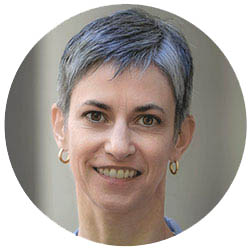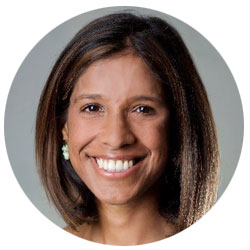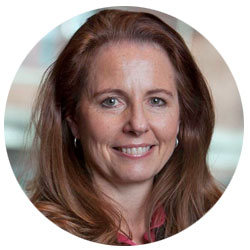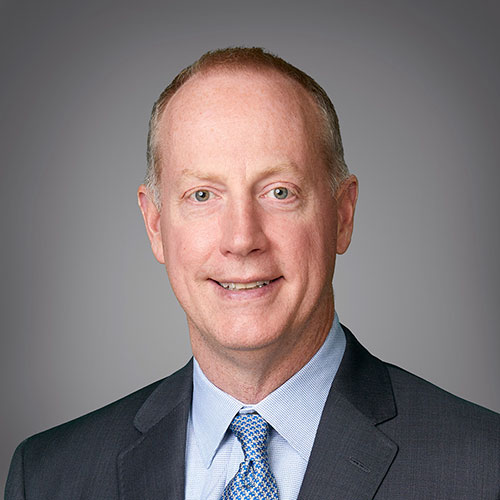
Briefing: The Impact of Repealing the Centers for Medicare and Medicaid Services Minimum Staffing Rule on Patient Outcomes
Presented to U.S. Senator Elizabeth Warren
News | Video
In remarks opening a February 4 Penn LDI virtual seminar on the topic, LDI Executive Director Rachel M. Werner, MD, PhD, noted: “High-quality primary care is the foundation of a high-functioning health system, and most evidence suggests that primary care is the only medical specialty where a greater supply produces improvements in population health, longer lives, and greater health equity at a lower cost.”
She also pointed out that the current U.S. system of primary care is falling short of these goals.

That framed the seminar question addressed by five top experts in an event titled “Reforming Primary Care for a 21st-Century Health Care System.” They included the former Director of the Center for Medicare and Medicaid Innovation, the co-chair of the National Academies of Sciences, Engineering, and Medicine’s Committee that produced the 2021 report, “Implementing High-Quality Primary Care: Rebuilding the Foundation of Health Care,” the Chief Population Health Officer at the Center for Medicaid and CHIP Services, the Senior Vice President and Chief Health Equity Officer at Humana, and a Harvard Medical School researcher focused on the payment and delivery of primary care.
The general consensus was that U.S. primary care is fragmented, underfunded, and hobbled by widespread inequities, chronic workforce shortages, cost and payment barriers, uneven distribution of providers, a long unwillingness to acknowledge and address the profound health impacts of social determinants of health, and a medical education system that holds primary care in low esteem.

Meanwhile, during the last two years, the COVID-19 pandemic has amplified these shortcomings. Ill-matched to meet the demands of such a catastrophic national emergency, reliance on the fee-for-service model has pushed many primary care practices to the brink of insolvency.
“Studies by my group and others have found evidence of declining access to primary care, which is, of course, a bad thing,” said panelist Ishani Ganguli, MD, MPH, of Harvard Medical School. “Fewer people are reporting that they have a primary care physician to begin with, and this is especially true in marginalized populations. We are also finding this is due in part to primary care workforce shortages and maldistribution of providers. And we also find increases in financial barriers, for example — rising out-of-pocket costs for office visits.”
These broad facts on the ground are not new. A 1996 report by the National Academies laid out a plan to address widespread deficiencies in the country’s primary care system. But 25 years later, the 2021 Academies report co-chaired by panelist Linda McCauley, PhD, RN, noted that the current primary care system’s foundation “is crumbling.”

“The report is more about accountability in the government,” said McCauley, Dean of the Nell Hodgson School of Nursing at Emory University. “The number of people who had significant input and responsibility for primary care in the United States was decentralized and uncoordinated, and that’s why the Committee felt implementation of improvements needs to be at the highest level of the Department of Health and Human Services. The overarching message has to come from the highest level of government, and we’ve not had that.”
“The Committee took a very broad look at the major challenges to primary care and what has stood in our way in implementing improvements,” McCauley continued. “We need to have better payment models. We need better access to care. It’s just not accessible to enough people and it doesn’t always engage them where they live and work. And the workforce issue needs great attention. Student trainees are not incentivized to go into primary care.”
Currently, the primary care and specialty practices fields each handle about 35 percent of annual patient visits. But primary care receives five percent of health care spending for this, while specialty practices receive 17 percent — or 340 percent more.

“There’s good evidence that students make decisions about their ultimate field of practice pretty early in medical school and other training programs,” said panelist and Humana Senior Vice President J. Nwando Olayiwola, MD, MPH. “So whatever changes we’re talking about need to be much further upstream.”
Ganguli agreed. “How much we pay primary care doctors is a reflection of how much we value the profession,” she said. “That message goes out very early to students. They are getting so much more exposure to specialty care in all of their lectures. We also have an image problem in primary care. Even the public sees specialty care as being better.”
“The way we conceptualize the training of primary care needs to change,” said McCauley. “Training has to be restructured so trainees can see models of primary care embedded in communities and experience that mode of professional care delivery. Now, when they’re out in the community, they see financially strapped settings. They never see the integration of home visits along with clinic care. Most primary care takes place in solo practices or practices connected with health care settings. These clinicians are overworked, under-resourced, and have limited space. In terms of taking in a team of students to show them how an interdisciplinary care team works — they don’t have space to do that. So, we are not exposing students enough to a care model that is exciting, community-engaged, and centered on families and multiple professionals working together. Instead, primary care is treated as just one more specialty rotation. So, we got it wrong, completely wrong, on the way we educate from the very beginning.”

Ellen-Marie Whelan, PhD, Chief Population Health Officer at the Center for Medicaid and CHIP Services, spoke about her agency’s effort to improve primary care. “CMS is looking at what we can do in the payer space,” she said. “But I’m also in CMS Medicaid and acutely aware of access issues. We think of Medicaid as a medical assistance program that can cover things some other payers can’t. The focus on equity is something we’re paying close attention to as we see which things in our toolkit will promote that. Primary care and value-based care is a way to improve equity. We’re looking at disparities and incorporating the social determinants of health.”
“A reformed primary care system involves innovations. Two that I’m really excited about are home and community care and the integration of mental health care and primary care,” said Patrick Conway, MD, referring to changes his company has made. A former Director of the Center for Medicare and Medicaid Innovation (CMMI), he is now the CEO of Optum Care Solutions.

“We have clinics across America and we will send advanced practice clinicians into home visits for Medicare Advantage, dual eligibles and for very sick people,” Conway continued. “We did over two million home visits last year. One example was a patient who had been hospitalized 14 times in a year and then went to zero with home care. We’re also wrapping mental and behavioral health around primary care and feeding that data and information back to the clinical care team.”
Another innovative approach can be found in Humana, the country’s fourth largest health insurance company, which has expanded to become a health care provider with 197 clinics.
“We are a large provider of primary care to seniors across the nation,” said Olayiwola. “Being both payer and provider gives us an opportunity to think about: What are we actually paying for? And also, what are we delivering? And how can we refine those care models to shift from fee-for-service to value-based models?”
“We’re seeing cost savings, improved access and the ability to really be more creative in the way we pay for things,” Olayiwola continued. “And though we’re largely Medicare Advantage, we see a lot of potential opportunity in Medicare innovation as a vehicle for tackling challenges.”
The five panelists were asked what they’d like to see in terms of progress in changing primary care over the next 10 years:
Conway: “I want us to have a primary care system we’ve invested in with interdisciplinary teams that meets all the diverse needs we’ve discussed here. That’s a huge ask, but it’s at the core of what we need.”
Ganguli: “I’d like to see a fundamental cultural shift in how we think about primary care and the role it plays for both patients, the public, and within our health systems. I think if we value primary care more, all these other changes may follow.”
McCauley: “I’d like to see a transformation in education that makes primary care the top choice that trainees actually want to work in.”
Whelan: “I would love to see changes that enable patients to know they’re in a good primary care practice. They can demand it, they can ask for it, and they can identify when they’re not getting it. And, also have the public better understand why they are entitled to be in a good primary care relationship.”
Olayiwola: “I’d love to see primary care really be a leader in dismantling structural racism and biases that show up in care. On the heels of recent studies that document how electronic health records continue to reinforce very negative stereotypes, and perhaps implicit and explicit biases, we could really be leaders in redefining what safety and cultural competence actually looks like in health care. We could make it a much better experience for people of all backgrounds.”


Presented to U.S. Senator Elizabeth Warren

Policymakers Should Consider Reporting and Planning Procedures That Do Not Involve Child Protective Services

The Braidwood Case Opens the Door For Others To Block PrEP and other Preventive Services

It’s the First National Database to Measure the Impact of Environmental Factors on Health

Changing the Health Care Reimbursement Model Could Improve Quality and Lower Costs

Home-Based Programs Hold Promise to Improve Their Health